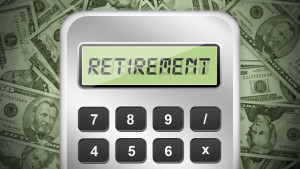 Today’s top story: Should you save less for retirement? Also in the news: Can student loan forgiveness happen, a new congressional proposal would require IRA/401(k) withdrawals to start at 75, and how to spot fake reviews on Amazon.
Today’s top story: Should you save less for retirement? Also in the news: Can student loan forgiveness happen, a new congressional proposal would require IRA/401(k) withdrawals to start at 75, and how to spot fake reviews on Amazon.
Should You Save Less For Retirement?
An extremely early retirement goal may rob you of the joy of living now. Consider a revised path and second career.
Can Student Loan Forgiveness Still Happen?
Debt forgiveness of $10,000 would cancel debt entirely for about 15 million borrowers, according to a NerdWallet analysis of federal data.
Required IRA, 401(k) withdrawals would start at age 75 under congressional proposal. Here’s who would benefit
How your retirement savings might be affected.
How to Spot Fake Reviews on Amazon
Those five stars might be bought and paid for.
 Today’s top story: When life blows up your well-laid plans. Also in the news: How to shop Black Friday deals online, 5 things to consider when shopping for index funds, and how much you should have in your 401(k), based on your age.
Today’s top story: When life blows up your well-laid plans. Also in the news: How to shop Black Friday deals online, 5 things to consider when shopping for index funds, and how much you should have in your 401(k), based on your age.  Today’s top story: Sustainable investing could get a lot harder. Also in the news: Why you should file the FAFSA ASAP, why savings accounts and CDs are still worth it despite low rates, and how to find your lost 401(k).
Today’s top story: Sustainable investing could get a lot harder. Also in the news: Why you should file the FAFSA ASAP, why savings accounts and CDs are still worth it despite low rates, and how to find your lost 401(k). Today’s top story: 6 credit card scams and how to avoid them. Also in the news: A new episode of the SmartMoney podcast on COVID impulse spending and building credit while paying off debt, how Black Friday shopping could look very different this year, and making a plan to repay your borrowed 401(k) money.
Today’s top story: 6 credit card scams and how to avoid them. Also in the news: A new episode of the SmartMoney podcast on COVID impulse spending and building credit while paying off debt, how Black Friday shopping could look very different this year, and making a plan to repay your borrowed 401(k) money. Today’s top story: Which airline has the most valuable elite status program. Also in the news: A look at summer homebuying, 25 tips for buying your first home, and how to automatically transfer your 401(k) money when you change jobs.
Today’s top story: Which airline has the most valuable elite status program. Also in the news: A look at summer homebuying, 25 tips for buying your first home, and how to automatically transfer your 401(k) money when you change jobs.